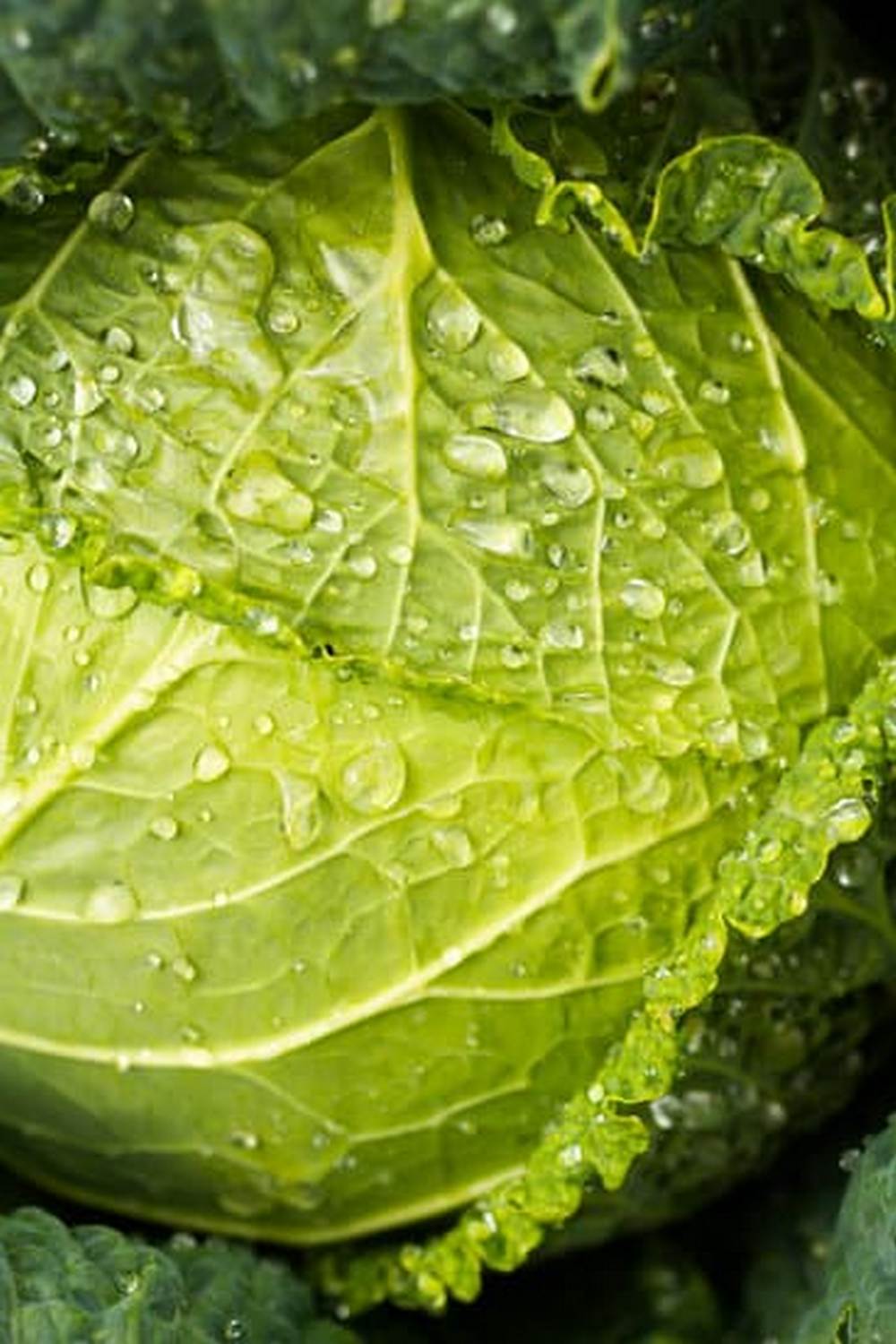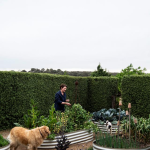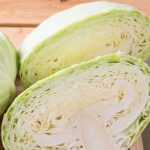Spring is the ideal time to get your hands dirty and start gardening spring vegetables. As the weather warms up and the days grow longer, the conditions are just right for planting a bountiful garden full of fresh produce. Whether you’re a seasoned gardener or a beginner looking to try your hand at growing your own food, spring offers a promising start to a successful growing season.
One of the key reasons why spring is considered the perfect time to start gardening vegetables is the optimal conditions it provides for plant growth. With moderate temperatures and increased sunlight, plants have the opportunity to establish strong roots and develop healthy foliage. This results in robust and productive vegetable crops that can thrive throughout the season.
Furthermore, starting your vegetable garden in spring allows you to enjoy an abundance of fresh and flavorful produce in the months ahead. From crisp lettuces and tender peas to juicy tomatoes and sweet peppers, there’s nothing quite like harvesting your own homegrown vegetables. By planning ahead, preparing your garden bed, and choosing the right vegetables for your climate, you can set yourself up for a successful and rewarding gardening experience this spring.
Planning Your Spring Vegetable Garden
Planting a successful spring vegetable garden starts with choosing the right vegetables for your specific climate. Different areas have varying temperature ranges and weather patterns that can impact the growth and yield of certain crops. Before selecting which vegetables to grow, it’s essential to consider factors such as average temperature, frost dates, and sunlight exposure in your location.
For cooler climates with later spring frosts, cold-hardy vegetables like kale, spinach, and peas are excellent choices. These plants are more tolerant of lower temperatures and can withstand a light frost without being damaged. On the other hand, if you live in a warmer climate with early springs and hot summers, heat-loving vegetables such as tomatoes, peppers, and cucumbers would thrive better in your garden.
When planning your spring vegetable garden, also take into account the space available in your garden beds or containers. Some vegetables require more room to grow, such as sprawling varieties like zucchini or pumpkins. If you have limited space, consider growing compact or vertical plants like bush beans or vertical cucumbers to make the most of your gardening area.
| Climate Type | Recommended Vegetables |
|---|---|
| Cooler Climates | Kale, Spinach, Peas |
| Warmer Climates | Tomatoes, Peppers, Cucumbers |
| Limited Space | Bush Beans, Vertical Cucumbers |
By selecting the right vegetables based on your climate conditions and available space, you can set yourself up for a successful gardening season filled with abundant harvests of fresh spring produce. Researching and planning ahead will ensure that you choose varieties that are well-suited for the environment in which they will be grown. Take time to consider these factors before planting your spring vegetable garden to maximize yields and enjoy a bountiful harvest throughout the season.
Preparing Your Garden Bed for Planting
When it comes to gardening spring vegetables, one of the most crucial steps is preparing your garden bed for planting. Proper soil preparation and amendments can make a significant difference in the health and productivity of your crops. Before you start sowing seeds or transplanting seedlings, take the time to assess the condition of your garden soil.
To begin, test the pH level of your soil to determine if it falls within the ideal range for the vegetables you plan to grow. Most spring vegetables prefer slightly acidic soil with a pH between 6.0 and 7.0.
If your soil is too acidic or alkaline, you can amend it with lime or sulfur to adjust the pH accordingly. Additionally, conduct a soil texture test to assess whether your soil is sandy, loamy, or clayey, as this will impact drainage and nutrient retention.
Once you have determined the pH level and texture of your soil, it’s time to add organic matter to improve its structure and fertility. Compost, well-rotted manure, and other organic materials can be mixed into the top few inches of soil to provide essential nutrients for your spring vegetables.
This amendment will also help enhance water retention and promote healthy root development. By taking the time to properly prepare your garden bed before planting, you can set yourself up for a successful growing season full of vibrant and bountiful harvests.
| Soil Preparation Steps | Benefits |
|---|---|
| Conduct pH test | Determine if pH levels are suitable for chosen vegetables |
| Assess soil texture | Affects drainage and nutrient retention |
| Add organic matter | Improves soil structure and fertility |
Starting Seeds Indoors
Choosing the Right Containers
When starting seeds indoors for your spring vegetable garden, choosing the right containers is crucial for successful germination and growth. Opt for seed trays or pots that have good drainage to prevent waterlogging, which can lead to root rot. Additionally, consider using biodegradable peat pots or cell packs that can be transplanted directly into the ground once the seedlings are ready, minimizing transplant shock.
Providing Adequate Light
Light is essential for healthy seedling development. Place your seed trays or pots in a location that receives plenty of natural sunlight. If natural light is limited, you can supplement with grow lights specifically designed for indoor seed starting. Keep the lights on for 12-16 hours a day and adjust the height as the seedlings grow to maintain proper distance and prevent leggy growth.
Maintaining Proper Temperature and Humidity
Maintaining an optimal temperature and humidity level is key to successful seed germination and growth indoors. Most vegetable seeds require temperatures between 65-75°F (18-24°C) to sprout. Using a heating mat under your trays can help maintain consistent warmth. Keep humidity levels around 50-60% by misting your seedlings regularly or using a humidity dome until they emerge from the soil. Be sure to remove the dome once they have sprouted to prevent mold growth.
By following these tips for starting seeds indoors, you’ll set your spring vegetable garden up for success from the very beginning. With proper care and attention during this crucial stage of growth, you’ll soon be transplanting healthy seedlings into your garden beds to enjoy a bountiful harvest of fresh, homegrown produce in the coming months.
Transplanting Seedlings Outdoors
Transplanting seedlings from indoor starters to the outdoor garden is a crucial step in the process of gardening spring vegetables. Ensuring a smooth transition for your plants can greatly impact their overall health and productivity. Here are some best practices to follow when transplanting seedlings outdoors:
- Timing is key: Before moving your seedlings outside, make sure to check the weather forecast for any chance of frost. Most spring vegetables thrive in temperatures above freezing, so be mindful of the local climate conditions before making the transfer.
- Harden off your seedlings: To acclimate your indoor-grown plants to the outdoor environment, gradually expose them to sunlight and outdoor conditions over a period of 7-10 days. Start with a few hours of indirect sunlight and increase exposure each day.
- Prepare the planting site: Choose a sunny spot in your garden with well-draining soil for optimal growth. Ensure that the soil has been properly amended with compost or organic matter to provide essential nutrients for your plants.
Once you have completed these steps, it’s time to transplant your seedlings into their new home in the garden. Carefully remove them from their containers, gently loosen their roots, and plant them at the appropriate depth in the soil. Water thoroughly after transplanting to help ease the shock of the move and promote healthy root development.
Remember to continue monitoring your transplanted seedlings for any signs of stress or dehydration in the days following their move. With proper care and attention, your spring vegetable garden will soon be thriving with an abundance of fresh produce ready for harvest.
Caring for Your Spring Vegetables
Spring is an exciting time to venture into gardening spring vegetables. As the weather warms up and the days lengthen, your garden comes to life with fresh growth and vibrant colors. Caring for your spring vegetables plays a crucial role in ensuring a successful harvest. From proper watering techniques to fertilizing schedules and pest management strategies, here are some essential tips to help you nurture your garden through the season.
Watering Your Spring Vegetables
One of the most critical aspects of caring for your spring vegetables is providing them with adequate water. Proper watering ensures that your plants receive the hydration they need to thrive and produce bountiful crops. In the spring, plants are actively growing and may require more frequent watering, especially during hot and dry spells.
It’s essential to water deeply, allowing the moisture to penetrate the soil and reach the roots. Consider investing in a soaker hose or drip irrigation system to deliver water directly to the root zone while minimizing evaporation.
Fertilizing Your Spring Vegetables
In addition to water, spring vegetables also benefit from regular fertilization to promote healthy growth and development. Before planting, incorporate organic matter such as compost or well-aged manure into your garden bed to enrich the soil with nutrients. Throughout the growing season, consider using a balanced fertilizer specifically formulated for vegetables to provide essential nutrients like nitrogen, phosphorus, and potassium.
Be mindful not to over-fertilize, as this can lead to excessive foliage growth at the expense of fruit production. Follow package instructions for proper application rates and timing.
Pest Management for Spring Vegetables
As your spring vegetable garden flourishes, it may attract unwanted visitors in the form of pests looking to feast on your hard-earned harvest. Implementing pest management strategies early on can help prevent infestations and minimize damage to your crops. Consider companion planting with insect-repelling herbs or flowers, like marigolds or basil, that deter common garden pests.
Regularly inspect your plants for signs of pest activity, such as chewed leaves or holes in fruits, and promptly address any issues with eco-friendly solutions like neem oil or diatomaceous earth. Practice good garden hygiene by removing debris and weeds that can harbor pests and diseases.
These practices can help you effectively care for your gardening spring vegetables throughout the season, setting you up for a successful harvest of fresh and flavorful produce straight from your backyard oasis.
Harvesting Spring Vegetables
Spring is a time of abundance in the garden, with an array of fresh and flavorful vegetables ready to be harvested. Knowing when and how to pick each crop is crucial to ensuring you get the best flavor and nutrition from your homegrown produce. As you tend to your gardening spring vegetables, it is essential to keep a close eye on each plant’s development to determine the optimal time for harvest.
One of the key indicators that a vegetable is ready to be picked is its size. Many vegetables, such as zucchini, cucumbers, and tomatoes, should be harvested when they reach a certain size to ensure they are at their peak flavor.
Overripe vegetables may become tough or lose their sweetness, so it’s important not to let them stay on the plant for too long. For leafy greens like lettuce and spinach, harvesting individual outer leaves allows the plant to continue growing new leaves for future harvests.
In addition to size, color can also be a valuable clue when determining if a vegetable is ripe for picking. Some vegetables change color as they mature, signaling that they are ready to be harvested. For example, bell peppers should have vibrant colors and firm textures before being picked.
Carrots should have deep orange hues without visible cracks or soft spots. Paying attention to these visual cues can help you harvest your spring vegetables at their peak ripeness for the best taste and texture in your recipes using fresh produce from your garden.
Recipes and Meal Ideas Using Fresh Spring Vegetables
When it comes to gardening spring vegetables, the joy of harvesting your homegrown bounty is just the beginning. With a variety of fresh produce at your fingertips, there are endless possibilities for creating delicious meals that highlight the flavors of spring. Whether you’re a seasoned chef or just starting out in the kitchen, incorporating your own harvest into recipes can elevate your culinary experience.
To make the most of your spring vegetable harvest, consider trying out these recipe ideas:
- Roasted Asparagus with Lemon and Parmesan: A simple yet flavorful side dish that lets the natural sweetness of asparagus shine.
- Spring Pea Risotto: Creamy Arborio rice cooked with fresh peas, mint, and Parmesan cheese for a comforting meal.
- Radish and Cucumber Salad: A refreshing salad tossed with a lemon vinaigrette, perfect for a light lunch or side dish.
By experimenting with different cooking techniques and flavor combinations, you can showcase the vibrant colors and tastes of your garden produce. From salads to stir-fries to soups, there are endless ways to incorporate spring vegetables into your meals. Don’t be afraid to get creative in the kitchen and make use of whatever is flourishing in your garden.
Remember that part of the joy of gardening is not only growing food but also savoring it with loved ones around the table. Share your homegrown meals with friends and family, or host a spring gathering featuring dishes made from your own harvest. Embrace the farm-to-table experience by celebrating the peak flavors of each season through simple yet delicious recipes showcasing your gardening spring vegetables.
Troubleshooting Common Issues in Spring Vegetable Gardening
As you delve into gardening spring vegetables, you may encounter various challenges along the way. Dealing with pests, diseases, and other issues is an integral part of maintaining a successful vegetable garden. One common issue that gardeners face is pest infestations, which can wreak havoc on your plants if left unaddressed. To combat this, consider implementing natural pest control methods such as introducing beneficial insects, using insecticidal soaps, or creating physical barriers like row covers to protect your crops.
In addition to pests, diseases can also pose a threat to your spring vegetable garden. Common diseases like powdery mildew, blight, and damping-off can impact the health and yield of your plants if not managed properly. To prevent disease outbreak, practice good sanitation by removing infected plant debris, providing adequate air circulation, and avoiding overhead watering to reduce moisture on foliage. Additionally, consider choosing disease-resistant varieties when planning your vegetable garden to minimize the risk of infection.
Furthermore, other challenges such as nutrient deficiency, poor soil drainage, or extreme weather conditions can impact the growth and development of your spring vegetables. Conducting regular soil tests to assess nutrient levels and pH balance can help you determine if any amendments are necessary for optimal plant health.
Proper irrigation practices and mulching can also aid in maintaining consistent moisture levels while protecting roots from temperature fluctuations. By being proactive in addressing these common issues, you can ensure a bountiful harvest of fresh and healthy spring vegetables from your garden.
Conclusion
As you wrap up your spring vegetable gardening journey, take a moment to celebrate the fruits (and vegetables.) of your labor. The vibrant hues of freshly picked produce, the satisfying crunch of a garden-fresh salad, and the sense of accomplishment in nurturing plants from seed to harvest are all reasons to rejoice in your efforts. Gardening spring vegetables is not just about the end result but also about the joys found in the process itself.
Looking back on the season, reflect on the lessons learned and successes achieved in tending to your spring vegetable garden. Perhaps you discovered a newfound passion for growing your own food or mastered a new gardening technique. Whatever it may be, take pride in your accomplishments and use them as motivation for future seasons. Each year brings new opportunities for growth and learning in the world of gardening spring vegetables.
As you bid farewell to spring and prepare for the next season, remember that gardening is a continuous cycle of renewal and growth. Whether you’re looking forward to summer tomatoes or fall squash, there is always something new to anticipate with each changing season. So keep nurturing your green thumb, stay curious about nature’s wonders, and most importantly, enjoy the bountiful harvest that comes from cultivating your own garden oasis filled with fresh spring vegetables.
Frequently Asked Questions
What Vegetables Should Be Planted in the Spring?
Spring is the perfect time to plant vegetables like tomatoes, peppers, cucumbers, zucchini, and squash. These warm-season crops thrive in the milder temperatures of spring and produce bountiful harvests during the summer months.
What Veggies Can I Plant in May?
In May, you can start planting a variety of vegetables in your garden. Some veggies that can be planted in May include beans, corn, carrots, radishes, lettuce, spinach, and kale. These crops can tolerate the warmer temperatures of late spring and will be ready for harvest later in the season.
How Do You Plan a Spring Vegetable Garden?
Planning a successful spring vegetable garden involves several key steps. First, consider your location and climate to determine the best planting dates for each crop. Next, choose a sunny spot with well-draining soil for your garden.
Consider companion planting to maximize space and deter pests naturally. Finally, make a planting schedule and stick to it to ensure a continuous harvest throughout the growing season.

If you’re looking to get into vegetable gardening, or are just looking for some tips on how to make your current garden better, then you’ve come to the right place! My name is Ethel and I have been gardening for years. In this blog, I’m going to share with you some of my best tips on how to create a successful vegetable garden.





